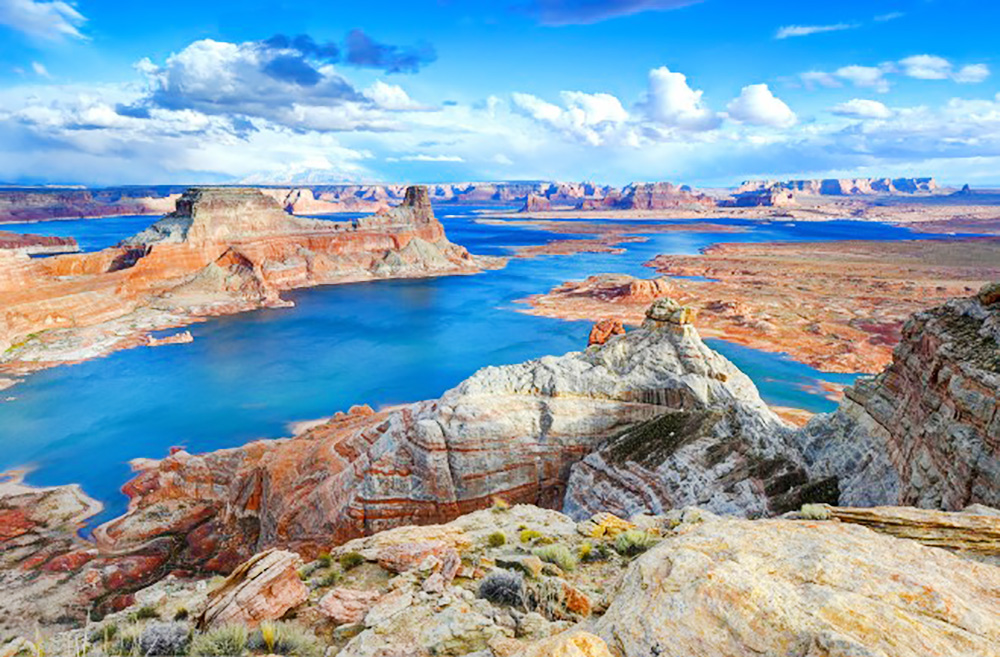Lake Powell, the giant holding tank straddling Arizona’s northern boundary, is currently forecast to receive 11.3 million acre-feet of water during the April-July snowmelt runoff season.
By Brandon Loomis || The Arizona Republic
Snowy and cool conditions that persisted across the West through last month will likely create a gush of water unlike any the Colorado River has seen since 2011, river forecasters say.
The expected snowmelt should protect hydroelectric power production at Glen Canyon Dam and prevent immediate losses to already depleted reservoirs serving the Southwest, regional and federal officials say.
But it won’t break a 23-year megadrought’s threat to water supplies in coming years.
“Even with this winter’s weather, conservation is more important now than ever,” Arizona Gov. Katie Hobbs said during a Thursday news conference celebrating federal funding for water savings by the Gila River Indian Community.
Lake Powell, the giant holding tank straddling Arizona’s northern boundary, is currently forecast to receive 11.3 million acre-feet of water during the April-July snowmelt runoff season, the National Weather Service’s Colorado Basin River Forecasting Center said Friday. That’s 177% of what it has averaged over a 30-year period marked by extreme lows linked to a warming climate.
If the river flows as expected, it will nearly double the volumes in two of the last three years, and nearly triple the volume recorded in 2021. Still, in a river with the nation’s two largest reservoirs sitting at roughly three-quarters empty, one good year doesn’t end drought. Refilling Lake Powell alone would take two years like this one, but only if none of the millions of downstream residents or farmers used any water from it.
Water storage:’Weather chaos’ brings enough snow to fill Verde River reservoirs, ease drought conditions
States can’t let up on conservation measures
The rush of cold water past Moab, Utah, in late March had Josh Stoner stoked for what’s to come.
“A ton of snow!” the Grand Junction, Colorado, resident said after emerging in a dry suit from a riffle at the river’s Big Bend Beach. “Super excited!”
Stoner and friends were in Utah for a swift-water rescue course in preparation for a rafting trip later this summer. They joined a dozen or so people floating through the riffle and taking turns getting reeled in with floating ropes. He is an experienced rafter who expects big things from the river this year. Flows in western Colorado have peaked early, in May, during the last several years, he said. This year he expects the big fun to last into June.
Arizona’s top water official, Tom Buschatzke, was decidedly less exuberant on Thursday. As director of the state Department of Water Resources, he remains immersed in talks to persuade water users within Arizona and beyond to share further reductions to ensure a reliable source next year and for years to come.
“We’re still working on a deficit,” he said. “We have to keep the pedal to the metal.”












